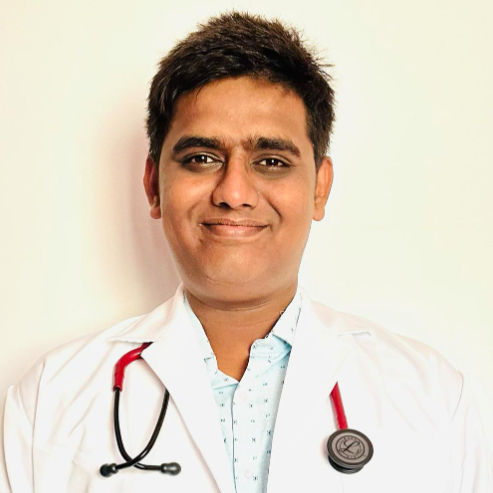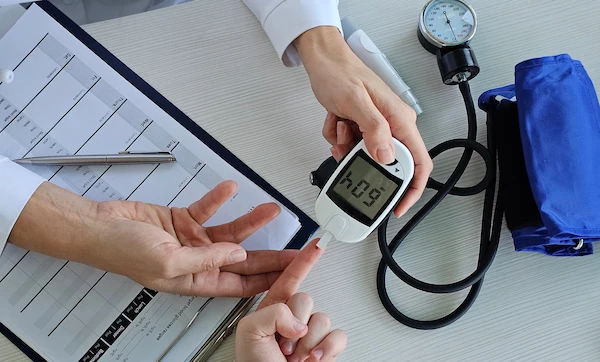The New Beat of Heart Care: A Guide to Advancements in Cardiology Procedures
Know about heart care, advanced cardiology procedures, what is TAVR, minimally invasive procedure, advanced diagnosis options, role of artificial intelligence in digital health and more.

Written by Dr. Dhankecha Mayank Dineshbhai
Reviewed by Dr. Siri Nallapu MBBS
Last updated on 6th Oct, 2025

Introduction
The field of cardiology is in the midst of a remarkable transformation. Gone are the days when treating a serious heart condition almost always meant a major, open-heart surgery with a long and difficult recovery. Today, a wave of innovation is making heart care safer, more precise, and remarkably less invasive. These advancements in cardiology procedures are not just technical feats; they are life-changing developments that offer new hope to millions of patients. This guide will walk you through the most significant breakthroughs, from tiny implants that can repair heart valves without a single chest incision to artificial intelligence that can predict cardiac events before they happen. Whether you're proactively managing your heart health or facing a specific diagnosis, understanding these options is the first step toward accessing the best possible care.
Consult Top Specialists for Personalised Tips
The Shift to Minimally Invasive Techniques
For decades, the scalpel and the sternal saw were the primary tools for fixing complex heart issues. While effective, these open-heart procedures came with significant trauma, a high risk of complications, and recovery times spanning months. The most significant trend in modern cardiology is the decisive shift away from this approach.
What Does "Minimally Invasive" Really Mean for You?
Instead of a large chest incision, surgeons and interventional cardiologists now use catheters, thin, flexible tubes that are threaded through small punctures in an artery, often in the groin or wrist. These catheters are guided to the heart with live X-ray imaging, carrying tools or implants to perform repairs from within. The benefits are profound:
Shorter Hospital Stays: Patients often go home in 1-3 days instead of a week or more.
Faster Recovery: Return to normal activities can be a matter of days or weeks, not months.
Less Pain and Scarring: No major chest incision means minimal post-operative pain and only tiny scars.
Accessibility for High-Risk Patients: Many elderly or frail patients who were once deemed "inoperable" for open-heart surgery can now be treated safely.
Transcatheter Aortic Valve Replacement (TAVR)
TAVR is a superstar among the latest minimally invasive heart surgery techniques. It treats aortic stenosis, a deadly narrowing of the heart's aortic valve. Traditionally, replacing this valve required open-heart surgery. With TAVR, a new valve, compressed onto a catheter, is fed through an artery to the heart. Once in position, it is expanded, pushing the old, diseased valve aside and immediately restoring proper blood flow. Studies have shown TAVR to be as effective as surgery for all risk groups, with far easier recoveries. It has fundamentally changed the treatment for aortic stenosis without open surgery.
MitraClip for Mitral Valve Regurgitation
Another groundbreaking procedure, the MitraClip, addresses a leaky mitral valve (mitral regurgitation). Instead of replacing the valve, a small clip is delivered via catheter to the valve's centre. The clip grasps the leaking valve leaflets, creating a double orifice that significantly reduces the backward flow of blood. This MitraClip procedure can dramatically improve symptoms like shortness of breath and fatigue, offering a lifeline to patients who are high-risk candidates for surgery.
The WATCHMAN Device for Atrial Fibrillation
For patients with atrial fibrillation (AFib) not caused by a heart valve problem, the primary danger is stroke. Blood clots can form in a small pouch of the heart called the left atrial appendage (LAA). While blood thinners are the standard treatment, they aren't suitable for everyone due to bleeding risks. The WATCHMAN device for AFib is a parachute-shaped implant that is permanently placed in the LAA to seal it off, preventing clots from escaping. This offers a potential long-term alternative to blood thinners, reducing stroke risk without the associated bleeding concerns.
Advancements in Diagnosing Heart Conditions
Accurate diagnosis is the foundation of effective treatment. Advancements in cardiology have dramatically improved how we see inside the heart, allowing for earlier and more precise detection of problems.
Coronary Calcium Scans: A Proactive Look at Heart Attack Risk
A coronary artery calcium (CAC) scan is a simple, non-contrast CT scan that measures the amount of calcified plaque in your heart's arteries. Plaque buildup is the hallmark of coronary artery disease. This scan provides a "calcium score," which is one of the most powerful predictors of future heart attack risk. It’s an excellent tool for asymptomatic individuals with intermediate risk factors (like family history or borderline cholesterol) to decide if more aggressive preventive measures are needed. Apollo24|7 offers convenient home collection for tests like vitamin D or HbA1c, and partnering diagnostic centres can provide specialised scans like CAC for a comprehensive health picture.
The Precision of Cardiac MRI and CT Angiography
While traditional angiograms are still the gold standard for viewing blockages, they are invasive. Cardiac CT Angiography (CCTA) is a non-invasive alternative that uses a powerful CT scanner and contrast dye to create detailed 3D images of the coronary arteries. It's excellent for ruling out significant disease in patients with chest pain. Cardiac Magnetic Resonance Imaging (MRI), on the other hand, provides unparalleled detail of the heart muscle itself, assessing damage from a heart attack, evaluating inflammation, and diagnosing complex cardiomyopathies. This level of precision ensures that treatment is tailored to the exact problem.
Innovations in Treating Coronary Artery Disease
Coronary artery disease (CAD), caused by clogged arteries, remains a leading killer. Treatment has evolved beyond basic metal stents.
Stents: The Stent that Disappears
Traditional metal stents are permanent implants. While they hold arteries open effectively, their permanent presence can cause long-term issues. Bioresorbable vascular scaffolds (BVS), or "disappearing stents," are made from a material similar to dissolvable sutures. They prop the artery open for about 6-12 months, enough time for the artery to heal, and then gradually dissolve, leaving behind a natural blood vessel. This restores the artery's normal function and eliminates the concerns associated with a permanent implant, though patient selection is key. The question of are bioresorbable stents safe is an active area of research, with newer generations showing improved safety profiles.
Robotic-Assisted Angioplasty: Enhanced Precision
Robotic systems are now being used to perform coronary angioplasty and stent placement. The cardiologist sits at a console several feet from the patient, controlling robotic arms with unparalleled precision and stability. This reduces physician exposure to radiation and can potentially improve stent placement accuracy. While not yet widespread, robotic heart surgery and intervention represent the cutting edge of precision medicine.
The Role of Artificial Intelligence and Digital Health
The future of cardiology is data-driven. AI in cardiology is no longer science fiction; it's a clinical tool.
AI in Analysing Scans and Predicting Risk
Algorithms can now analyse echocardiograms, MRIs, and CT scans faster and sometimes more accurately than the human eye, detecting subtle patterns indicative of early disease. AI can also integrate data from electronic health records—including blood tests, genetics, and lifestyle factors to generate highly personalised risk scores, predicting an individual's chance of having a heart attack years in advance.
Remote Patient Monitoring with Wearables
Devices like smartwatches with ECG capabilities allow for continuous, remote monitoring for heart failure patients and those with arrhythmias like AFib. This data can be transmitted directly to healthcare providers, enabling early intervention if a problem is detected, potentially preventing hospitalisation. If you notice persistent irregular heartbeats on your wearable device, consult a doctor online with Apollo24|7 for further evaluation.
Conclusion
The advancements in cardiology procedures we see today are paving the way for a future where heart disease is managed more like a chronic condition than a fatal event. The trajectory is clear: care is becoming less invasive, more data-informed, and intensely personalised. The goal is shifting from simply repairing damage to predicting and preventing it altogether. If you have concerns about your heart health, the most important step is to start a conversation with a healthcare professional. If your condition does not improve after trying lifestyle methods, book a physical visit to a doctor with Apollo24|7 to discuss which of these modern advancements might be right for you.
Consult Top Specialists
Consult Top Specialists for Personalised Tips

Dr. Ramakrishna Janapati
Cardiologist
11 Years • MBBS, MD (Gen. Med.), DM (Cardiology)
Hyderabad
Apollo Hospitals Jubilee Hills, Hyderabad
(25+ Patients)
Dr. Praveen Jaiswal
Cardiologist
17 Years • MD(Medicine), DM(Cardiology)
Indore
Apollo Hospitals Vijay Nagar, Indore

Dr. E Sanjeeva Kumar
Cardiologist
13 Years • MD, DM
Hyderabad
Apollo Hospitals Jubilee Hills, Hyderabad
(50+ Patients)

Dr. Sushith C
General Physician
2 Years • MBBS
Bengaluru
PRESTIGE SHANTHINIKETAN - SOCIETY CLINIC, Bengaluru

Dr. Sumanjita Bora
Cardiologist
9 Years • MBBS, PGDCC
Bengaluru
Apollo Clinic, Sarjapur Road, Bengaluru
Consult Top Specialists

Dr. Ramakrishna Janapati
Cardiologist
11 Years • MBBS, MD (Gen. Med.), DM (Cardiology)
Hyderabad
Apollo Hospitals Jubilee Hills, Hyderabad
(25+ Patients)
Dr. Praveen Jaiswal
Cardiologist
17 Years • MD(Medicine), DM(Cardiology)
Indore
Apollo Hospitals Vijay Nagar, Indore

Dr. E Sanjeeva Kumar
Cardiologist
13 Years • MD, DM
Hyderabad
Apollo Hospitals Jubilee Hills, Hyderabad
(50+ Patients)

Dr. Sushith C
General Physician
2 Years • MBBS
Bengaluru
PRESTIGE SHANTHINIKETAN - SOCIETY CLINIC, Bengaluru

Dr. Sumanjita Bora
Cardiologist
9 Years • MBBS, PGDCC
Bengaluru
Apollo Clinic, Sarjapur Road, Bengaluru
More articles from General Medical Consultation
Frequently Asked Questions
Are minimally invasive heart procedures as effective as traditional open-heart surgery?
For many conditions and patient groups, yes. Landmark clinical trials have shown that procedures like TAVR are as effective as, and often safer than, surgical aortic valve replacement, especially for intermediate and high-risk patients. The 'heart team' of surgeons and cardiologists will determine the best approach for each individual.
Who is a good candidate for a WATCHMAN device?
The WATCHMAN is typically considered for patients with non-valvular atrial fibrillation who need an alternative to long-term blood thinners, usually because they have a high risk of bleeding or have experienced bleeding while on these medications.
What is the recovery time for a TAVR procedure?
Recovery is significantly faster than open-heart surgery. Many patients are walking the same day, leave the hospital within 1-3 days, and can return to most normal activities within a week or two. Full recovery is generally much shorter.
How accurate are AI predictions for heart attacks?
While still evolving, AI algorithms are demonstrating remarkable accuracy, often outperforming traditional risk models. They can identify subtle patterns in medical data that humans might miss, leading to earlier and more precise interventions. However, they are used as a tool to aid doctors, not replace them.
Is robotic heart surgery available everywhere?
No, robotic-assisted procedures are still primarily available at large, advanced medical centres and academic hospitals. They require significant investment and specialised training. However, their use is gradually expanding as technology proves its value.




